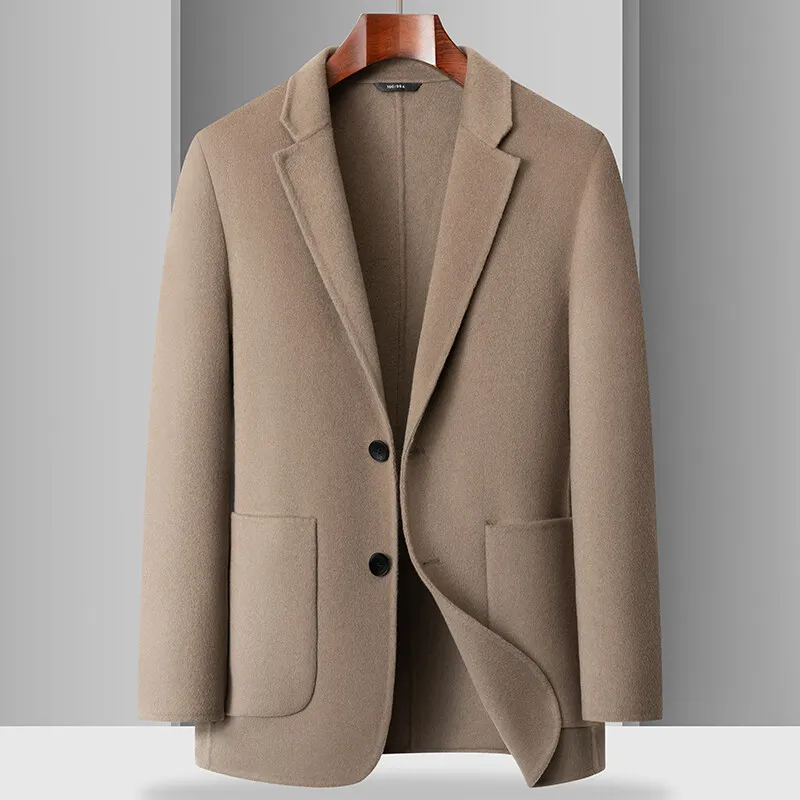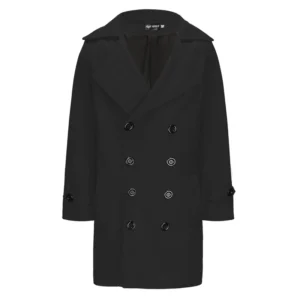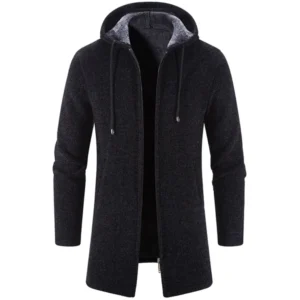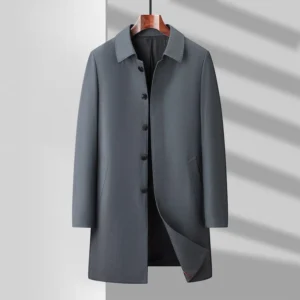Understanding the Wool Car Coat: Origin and Definition
A wool car coat is a distinguished mid-length outerwear garment primarily crafted from wool or wool blends. Typically extending from mid-thigh to just above the knee (approximately 34-42 inches or 86-107 cm in length), this versatile coat strikes the perfect balance between the shorter jacket and the longer overcoat. Its defining characteristics include a clean silhouette, functional design, and the exceptional warmth that comes from its wool composition, usually ranging from 80-100% wool content.
Originally designed with a specific purpose in mind, the wool car coat emerged as a practical solution for early motorists who needed protection from the elements while maintaining mobility and comfort when driving. This functional origin has shaped many of its distinctive features that we recognize today.
Over decades, this practical garment has evolved from purely utilitarian outerwear to a sophisticated wardrobe staple that combines timeless style with practical functionality. The ultimate guide to wool car coats for men reveals how this versatile piece has maintained its relevance through changing fashion trends and lifestyles.
Today’s men’s wool car coat options offer the perfect blend of tradition and contemporary style, making them a cornerstone in the modern man’s wardrobe while honoring their practical heritage.
The Evolution of the Car Coat: From Motoring Essential to Fashion Statement
The car coat’s story begins in the early 20th century during the dawn of the automotive age. When automobiles first became popular, they were predominantly open-topped vehicles that offered little protection from wind, rain, and cold temperatures. Early motorists needed specialized outerwear that could withstand these harsh conditions while allowing for comfortable movement behind the wheel.
The original car coats were significantly longer and heavier than today’s versions, often extending below the knee and frequently lined with fur or thick insulation. These robust garments featured high collars, wind flaps, and secure closures to keep drivers protected from the elements during long journeys in open vehicles.
As automobile technology evolved and enclosed, heated cars became standard, the practical needs that shaped early car coats changed dramatically. The garment gradually transformed, becoming shorter, lighter, and more streamlined. Despite these changes, wool remained the material of choice due to its natural insulation, durability, and classic appearance.
By the mid-20th century, the car coat had transcended its purely functional origins to become a fashion staple. The practicality that made it ideal for driving—moderate length, comfortable fit, and versatile styling—made it equally suitable for everyday urban wear. The unmatched benefits of wool car coats continued to make them superior to many synthetic alternatives that emerged in later decades.
Understanding what different men’s dress coats are called helps place the car coat in proper context within the broader spectrum of outerwear. While design elements have been refined and materials have sometimes been blended with performance fabrics, the essential character of the wool car coat remains remarkably consistent with its historical roots.
Key Characteristics of the Classic Wool Car Coat
Length and Cut
The defining characteristic of a car coat is its practical length—typically falling from mid-thigh to just above the knee. This medium length is deliberately designed to provide adequate coverage and warmth while allowing ease of movement, particularly when sitting in a vehicle.
Car coats generally feature:
– A length between 34-42 inches (86-107 cm), hitting at mid-thigh to just above the knee
– A straight or slightly A-line silhouette that allows comfortable sitting
– A roomier fit through the shoulders and chest to accommodate layers underneath
– A clean, streamlined appearance without excessive bulk or flare
This carefully considered length represents the perfect middle ground—longer than a casual jacket for better weather protection, yet shorter than a traditional overcoat for improved mobility.
Material Composition
Wool stands as the quintessential material for quality car coats due to its exceptional natural properties:
- Wool varieties: High-quality car coats typically use Melton wool, lambswool, or wool tweed
- Wool percentage: True wool car coats contain at least 80% wool, with many premium options offering 90-100% wool content
- Common blends: Wool is sometimes combined with cashmere for softness, or with synthetic fibers like polyester or nylon for enhanced durability and weather resistance
- Performance characteristics: Wool naturally repels water, regulates body temperature, and provides insulation even when damp
The question of whether an 100 percent wool coat is best for winter is particularly relevant when considering car coat options, as pure wool offers maximum insulation but may lack some of the performance features of wool blend coats.
Design Elements
The classic wool car coat balances functionality with clean design:
- Collar styles: Most commonly features a notched collar or stand-up collar that can be turned up against the wind
- Closure systems: Typically single-breasted with buttons or concealed plackets for a streamlined appearance
- Pocket configurations: Usually includes two side pockets, often with flaps, positioned at a comfortable hand height; some include an additional chest pocket or interior pockets
- Interior features: Quality wool car coats often feature full lining for comfort, interior pockets for valuables, and sometimes a buttoned half-belt at the back for shape
These design elements combine to create a coat that’s both practical for everyday wear and sophisticated enough for business and formal occasions.
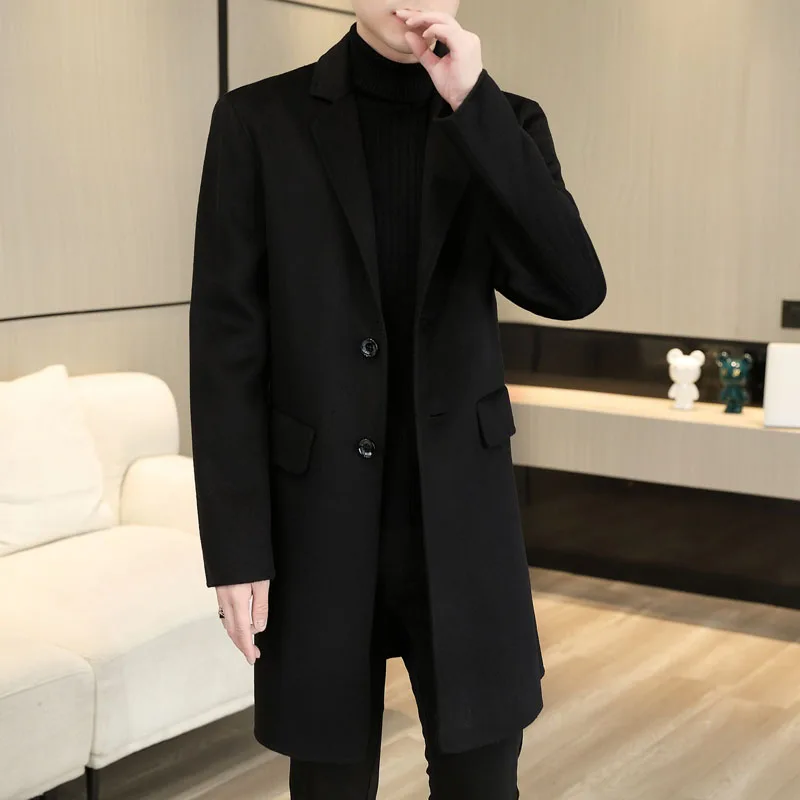
Wool Car Coat vs. Other Outerwear: A Comparative Analysis
Understanding how wool car coats differ from other popular outerwear helps highlight their unique position in a well-rounded wardrobe:
| Feature | Wool Car Coat | Overcoat | Peacoat | Trench Coat |
|---|---|---|---|---|
| Length | Mid-thigh to above knee (34-42”) | Below knee (42-48”) | Hip length (30-34”) | Mid-thigh to below knee (varies) |
| Fit | Semi-fitted, room for layers | Often more formal, structured | Fitted, shorter | Often belted, adjustable |
| Weight | Medium-heavy | Heavy | Medium-heavy | Light-medium |
| Formality | Business to smart casual | Business formal to business | Smart casual to casual | Business to casual |
| Material | Primarily wool | Often pure wool | Heavy wool | Traditionally cotton gabardine |
| Design | Single-breasted, simple | Often double-breasted, structured | Double-breasted, nautical | Belted with storm flaps |
The car coat occupies a versatile middle ground in terms of formality and function. Unlike the longer, more formal wool overcoat, a car coat allows for easier movement while still pairing well with business attire. It offers more coverage and typically more warmth than the shorter wool pea coat, which has naval origins and a more casual aesthetic.
Understanding the specific differences between a wool car coat versus a pea coat can help determine which style better suits your lifestyle and wardrobe needs. While both are classic wool outerwear pieces, they serve slightly different purposes and project different aesthetics.
Unlike a trench coat, which is often lighter weight and designed primarily for rain protection, the wool car coat excels in cold, dry conditions while still offering decent weather resistance. The car coat’s simpler design also tends to age better than more trend-sensitive styles, making it a more dependable long-term investment.
The Practical Benefits of Wool in Car Coats
Wool’s natural properties make it exceptionally well-suited for outerwear, particularly for car coats:
- Superior insulation: Wool traps air between its fibers, creating natural insulation that maintains warmth even in frigid conditions, making it ideal for keeping you warm during winter
- Moisture management: Wool can absorb up to 30% of its weight in moisture without feeling damp, while simultaneously wicking perspiration away from the body
- Natural water resistance: The outer scales of wool fibers contain lanolin, which provides natural water repellency—light rain will bead up and roll off rather than immediately penetrate
- Breathability: Unlike many synthetic materials, wool allows air circulation that prevents overheating and the buildup of interior moisture
- Odor resistance: Wool naturally resists bacterial growth that causes odors, requiring less frequent cleaning than many alternatives
- Durability and longevity: With proper care, a quality wool car coat can last decades, developing character while maintaining functionality
- Sustainable material: As a renewable natural resource, wool represents a more environmentally conscious choice than petroleum-based synthetic alternatives
These inherent qualities explain why wool has remained the preferred material for quality car coats throughout their history. Even as new technical fabrics have emerged, none have matched wool’s combination of natural performance characteristics and timeless appearance.
How to Style a Wool Car Coat: Versatility in Action
The wool car coat’s enduring popularity stems partly from its remarkable versatility across different dress codes and occasions:
Formal and Business Styling
- Pair with tailored suits in complementary colors (navy coat with gray suit, charcoal coat with navy suit)
- Layer over dress shirts and ties with wool trousers
- Complete with leather dress shoes and a cashmere scarf
- Choose solid, darker colors (navy, charcoal, black) for maximum versatility in formal settings
Business Casual Combinations
- Wear over a light sweater or quarter-zip pullover with button-down shirt
- Combine with chinos or wool dress pants
- Add leather loafers or Chelsea boots for a refined casual look
- Consider textured wool coats like herringbone or tweed patterns for added visual interest
Casual Everyday Wear
- Layer over jeans with sweaters, henleys, or casual button-downs
- Add leather or suede boots for a cohesive look
- Accessorize with casual scarves, beanies, or leather gloves
- Consider lighter neutral colors (camel, light gray) or subtle patterns for more casual settings
How to wear a wool car coat effectively comes down to understanding proportions and color coordination. The coat’s clean lines and classic silhouette make it an excellent frame for almost any outfit underneath.
For colder weather, mastering winter layering with a wool car coat allows you to maintain style while adding necessary warmth. Consider thin, insulating base layers that won’t create bulk under your coat.
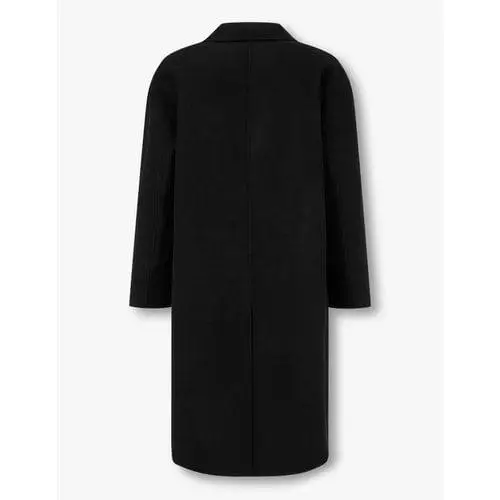
Selecting Your Perfect Wool Car Coat: A Buyer’s Guide
Finding the ideal wool car coat involves careful consideration of several key factors:
Material Quality Assessment
- Wool percentage: Look for at least 80% wool content for optimal warmth and performance
- Wool type: Merino and lambswool offer softness; Melton provides structure and durability
- Hand feel: Quality wool has a smooth, substantial feel with natural elasticity
- Weave density: Hold the fabric up to light—tighter weaves with less light penetration generally indicate better quality and warmth
Construction Details
- Seams: Look for flat, even stitching with no puckering or loose threads
- Pattern alignment: Check that patterns match at seams and pockets
- Lining: Ensure smooth lining attachment with no pulling or bunching
- Buttons: Quality buttons should be securely attached, with reinforced button holes
- Interior finishing: Clean interior seams and attention to detail often indicate overall quality
Fit Considerations
- Shoulders: Seams should align with your natural shoulder edge
- Sleeve length: Should cover suit jacket sleeves but not extend beyond your thumb joint
- Body: Allow enough room for layering without appearing oversized
- Collar: Should lay flat against your neck and lapels when buttoned
For more specific recommendations, our guide to the best wool car coats for men provides curated options across different price points and styles. Understanding what makes a 70 percent wool coat perform differently from higher percentage options can help you make the right choice for your climate and needs.
Mens Double Breasted Pea Coat, Mens Wool Blend Coat, Mens Wool Pea Coat
Price range: $136.84 through $157.36 Select options This product has multiple variants. The options may be chosen on the product pageMens Cashmere Overcoat, Mens Hooded Winter Coat, Mens Wool Blend Coat
Price range: $128.72 through $139.68 Select options This product has multiple variants. The options may be chosen on the product pageMens Black Overcoat, Mens Black Wool Coat, Mens Wool Overcoat
$339.18 Select options This product has multiple variants. The options may be chosen on the product pageMens Grey Overcoat, Mens Wool Blend Coat, Mens Wool Overcoat
$201.28 Select options This product has multiple variants. The options may be chosen on the product pageMens Herringbone Coat, Mens Long Overcoat, Mens Wool Overcoat
Price range: $197.16 through $203.69 Select options This product has multiple variants. The options may be chosen on the product page- Price range: $177.52 through $182.44 Select options This product has multiple variants. The options may be chosen on the product page
Proper Care and Maintenance for Lasting Quality
A quality wool car coat represents a significant investment that can deliver decades of service when properly maintained:
Cleaning Recommendations
- Frequency: Clean only when necessary—wool naturally repels dirt and odors
- Method: Dry clean only, unless manufacturer specifies otherwise
- Spot cleaning: Address small stains promptly with a damp cloth and mild soap
- Professional care: Choose dry cleaners experienced with wool garments
- End of season: Clean before storage to prevent moth damage
Storage Best Practices
- Clean before storing to remove food particles and body oils
- Use wide, shaped wooden or padded hangers to maintain shoulder structure
- Allow adequate space between garments for air circulation
- Use breathable garment bags rather than plastic
- Consider cedar blocks or lavender sachets as natural moth deterrents
Regular Maintenance
- Brush coat regularly with a soft clothes brush to remove surface dirt
- Air out after wearing in damp conditions before storing
- Address minor pilling with a fabric shaver designed for wool
- Check and tighten buttons periodically
- Make minor repairs promptly before they worsen
These simple care routines will help preserve the appearance and functionality of wool coats generally, and car coats specifically, ensuring they remain wardrobe staples for many years.
Modern Innovations in Wool Car Coat Design
While respecting traditional design elements, contemporary wool car coats incorporate numerous innovations:
Advanced Material Technologies
- Water-resistant treatments that enhance wool’s natural water repellency without compromising breathability
- Membrane lamination between shell and lining for improved wind resistance
- Performance wool blends that incorporate stretch fibers for improved movement
- Lighter weight, higher performing wool varieties that provide warmth without bulk
Functional Enhancements
- Concealed tech pockets designed specifically for smartphones and other devices
- Strategically placed reflective details for improved visibility after dark
- Magnetic closures that provide security while maintaining clean lines
- Adjustable features that allow customization for different weather conditions or style preferences
Sustainable Practices
- Organic and ethically sourced wool options
- Recycled wool blends that reduce environmental impact
- Low-impact dyeing processes that conserve water and reduce chemical use
- Biodegradable or recycled linings and trims
These innovations maintain the classic appeal of wool car coats while addressing contemporary needs and values. For inspiration on incorporating these modern designs into your wardrobe, explore stylish wool car coat outfits for men.
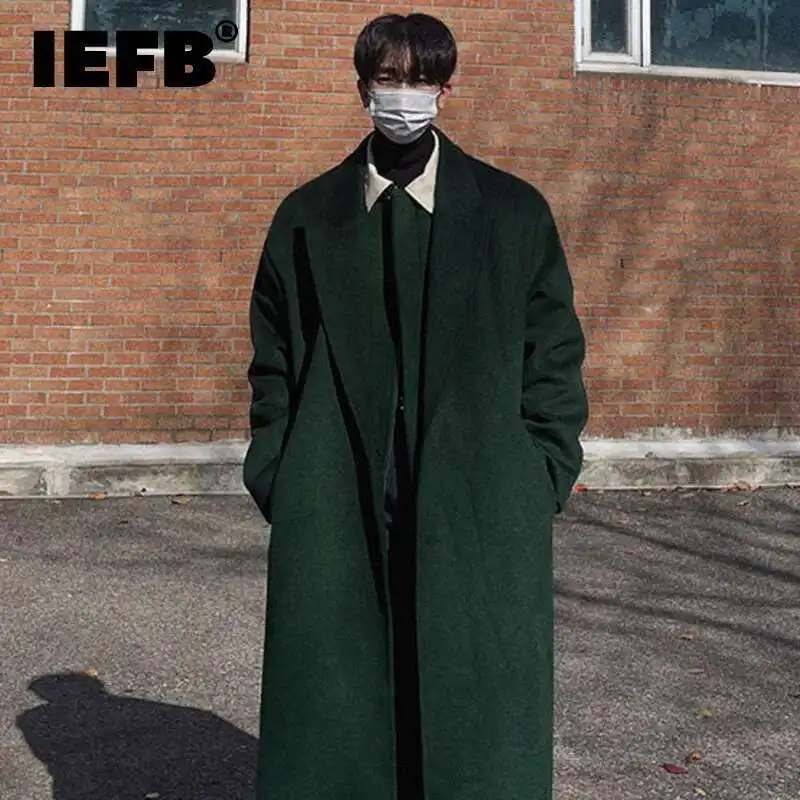
Is a Wool Car Coat Right for You? Making the Final Decision
When deciding if a wool car coat deserves a place in your wardrobe, consider these key questions:
What’s your typical winter climate?
Wool car coats excel in cold, dry conditions and light precipitation. For extremely wet or severe winter regions, you may need additional options, though understanding how warm wool coats are in winter can help set appropriate expectations.
What’s your typical commute or lifestyle?
If you frequently travel by car or public transportation, the car coat’s length and mobility make it particularly suitable. Its mid-length provides adequate coverage when sitting without bunching or restricting movement.
What’s your usual dress code?
The wool car coat bridges formal and casual environments exceptionally well. It complements business attire perfectly while also elevating casual outfits, making it ideal for those who navigate varied dress codes.
What existing outerwear do you own?
Consider how a car coat would complement your current wardrobe. If you already own very casual and very formal outerwear, a wool car coat might fill the versatile middle ground perfectly.
A wool car coat represents one of the most versatile investments in outerwear. Its timeless design transcends seasonal trends, while its practical heritage ensures continued functionality. For most men, it serves as the perfect balance of sophistication, comfort, and practicality—equally at home in professional settings and weekend activities.
With proper selection and care, a quality wool car coat from a reputable brand like Metro Cloak can serve as a cornerstone of your cold-weather wardrobe for many years, offering exceptional value despite its initial investment.

